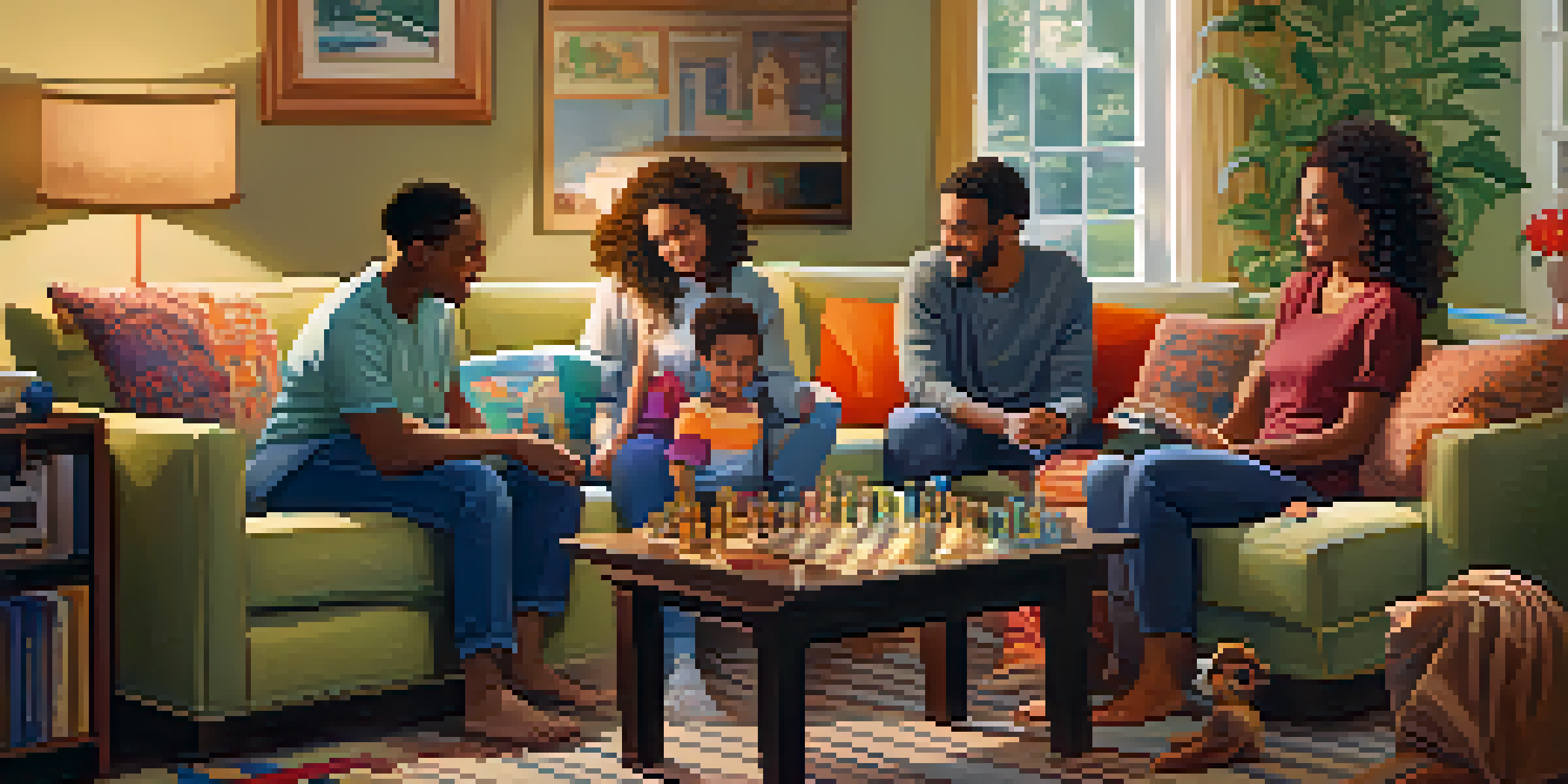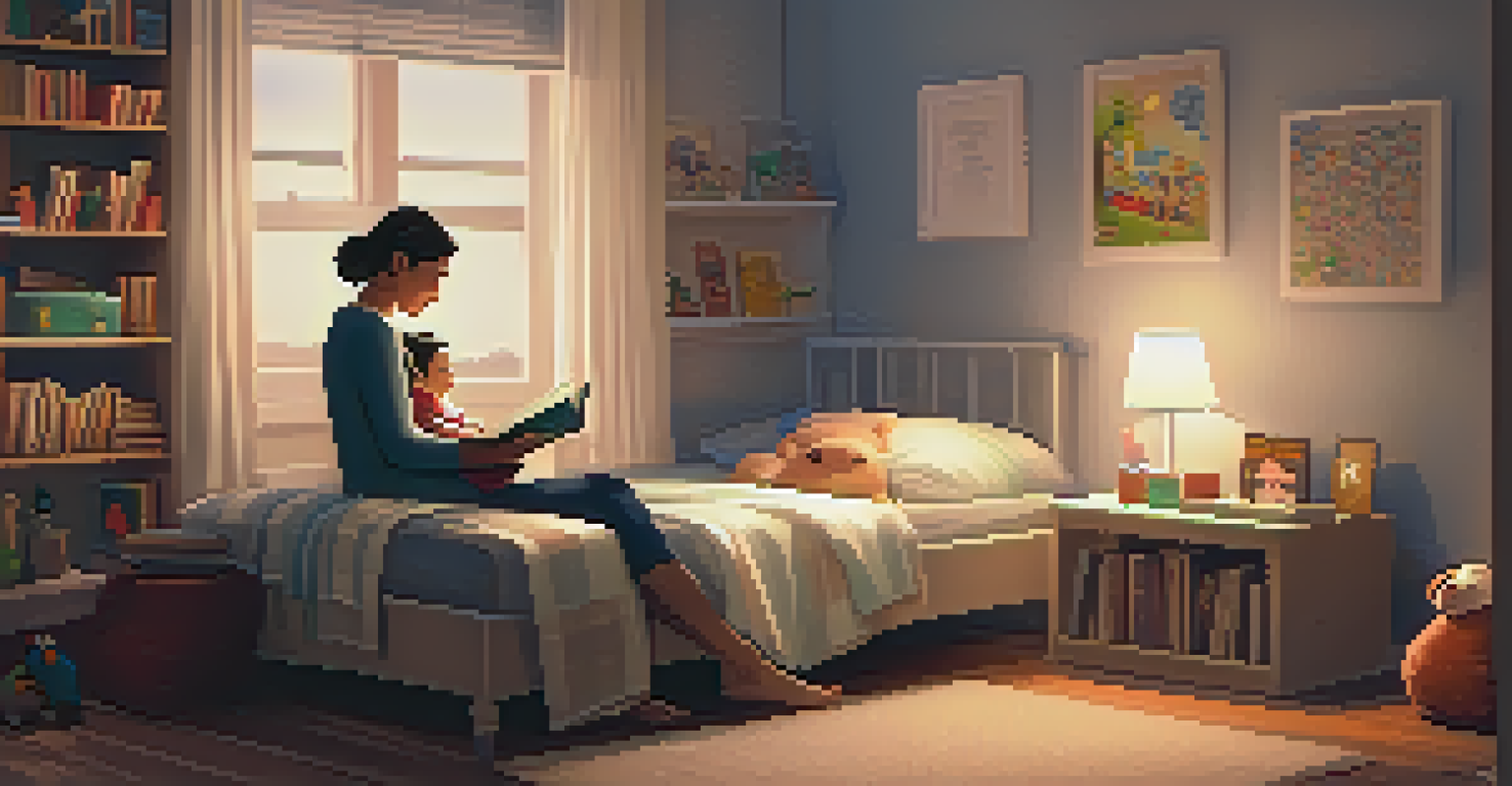Stereotypes in Hollywood: Family Roles and Their Impact

Understanding Family Stereotypes in Hollywood
Hollywood has long been a mirror reflecting societal norms, and family roles are no exception. From the traditional nuclear family to more modern interpretations, the way families are portrayed can influence public perception. These stereotypes often simplify complex relationships into easily digestible narratives, which can both entertain and misinform audiences.
The only thing that ever sat its way to success was a hen.
Take the classic sitcom family, for instance. The father is often the breadwinner, the mother the caretaker, and the children are typically portrayed as either rebellious teens or innocent youngsters. This oversimplification can lead to unrealistic expectations about family dynamics in the real world, where roles are often more fluid and varied.
As audiences consume these portrayals, they may unconsciously adopt these stereotypes, affecting their own views on family roles. This phenomenon highlights the powerful role that media plays in shaping our understanding of family, often leading to rigid expectations that may not reflect reality.
The Historical Context of Family Roles in Film
To truly understand the impact of family stereotypes, we must consider the historical context of Hollywood. Early films often depicted families in very traditional roles, reflecting the values of their time. As society evolved through the decades, so too did the portrayals of family, albeit not always in a progressive way.

For example, during the 1950s, the ideal family was often depicted as wholesome and uniform, with clear-cut roles. However, as the civil rights movement and feminist movements gained momentum, filmmakers began to challenge these norms, albeit slowly. This shift allowed for more diverse representations, but remnants of past stereotypes still lingered.
Hollywood's Family Stereotypes Persist
Traditional family roles in Hollywood often create unrealistic expectations that influence public perception and real-life dynamics.
It's crucial to recognize that while some progress has been made, the portrayal of families in film still often falls back on outdated stereotypes. This history shapes our current understanding and acceptance of different family dynamics, making it essential to critically assess what we see on screen.
Impact of Stereotypes on Real-Life Family Dynamics
The stereotypes we see in Hollywood can significantly impact real-life family dynamics. When parents and children consume media that reinforces traditional roles, they may feel pressured to conform to those expectations. This can lead to conflict, especially in families that don't fit the mold of the 'ideal' family portrayed in films.
Media is not just a reflection of our society; it shapes our understanding of it.
Imagine a single parent watching a movie that glamorizes the two-parent household. They might feel inadequate or struggle with feelings of inferiority. This can be detrimental to their self-esteem and, as a result, impact their relationship with their children, creating a cycle of negative self-perception.
Moreover, when children grow up seeing limited representations of family structures, they may internalize these stereotypes, which can shape their understanding of relationships and family life. This makes it all the more important for filmmakers to broaden their scope and challenge conventional portrayals.
Shifting Stereotypes: Progress in Hollywood
Fortunately, Hollywood is beginning to shift its portrayal of family roles, reflecting a more diverse array of experiences. Recent films and shows have started to showcase single parents, blended families, and LGBTQ+ families, allowing for richer narratives that resonate with a wider audience. This progress signals a positive change in how families are depicted on screen.
A great example of this shift is the series 'Modern Family,' which presents a range of family structures in a humorous yet relatable way. By doing so, it normalizes diversity in family dynamics, helping to dismantle harmful stereotypes. Viewers get to see the complexity and love that exists in various family forms.
Progress in Diverse Family Portrayals
Recent shifts in media have begun to showcase a broader range of family structures, promoting inclusivity and challenging outdated stereotypes.
However, while there’s a growing trend towards inclusivity, there's still a long way to go. Continued advocacy for diverse storytelling in Hollywood is essential to ensure that all families feel represented and valued.
The Role of Audience Reception in Shaping Stereotypes
The relationship between Hollywood and its audience is a two-way street. Audience reception plays a critical role in shaping stereotypes, as viewers often reinforce what they see on screen. If a particular portrayal is well-received, filmmakers may be encouraged to produce more of the same, regardless of its accuracy or relevance.
For instance, if a film about a nuclear family garners significant box office success, studios may see it as a winning formula and continue to push similar narratives. This can create a cycle where outdated stereotypes are perpetuated, making it vital for audiences to demand better representation and more complex characters.
As consumers of media, viewers hold power. By supporting projects that challenge stereotypes and elevate diverse family stories, audiences can influence the types of narratives that Hollywood produces.
The Influence of Social Media on Family Portrayals
In today's digital age, social media has become a powerful tool for shaping perceptions of family roles. Platforms like Twitter, Instagram, and TikTok allow for immediate feedback on family representations in film and television. This real-time interaction enables audiences to voice their opinions and demand accountability from creators.
For example, when a show portrays a stereotype that viewers find problematic, hashtags can quickly trend, drawing attention to the issue. This creates a dialogue that can lead to change, as creators become more aware of the impact of their portrayals. The result is a more engaged audience that holds content creators accountable.
Audience Power Shapes Media Narratives
Viewers can influence Hollywood by supporting diverse stories and holding creators accountable for their portrayals of family roles.
Additionally, social media provides a platform for marginalized voices to share their family stories, offering perspectives that mainstream media often overlooks. This democratization of storytelling helps to enrich the narrative landscape, allowing for a more nuanced understanding of what family looks like today.
The Future of Family Roles in Hollywood
Looking ahead, the future of family roles in Hollywood appears to be on the brink of transformation. As society continues to evolve and embrace diversity, filmmakers are increasingly recognizing the need for authentic representations of family dynamics. This shift is not just necessary for inclusivity but also for storytelling that resonates with audiences on a deeper level.
Innovative storytelling that transcends traditional stereotypes can provide a fresh take on family. For instance, exploring themes of parenthood, love, and connection in a variety of contexts can lead to richer narratives. This evolution encourages viewers to reflect on their own experiences and broaden their understanding of family.

Ultimately, the future of families in Hollywood rests in the hands of both creators and audiences. By advocating for diverse stories and supporting inclusive projects, we can pave the way for a media landscape that reflects the complexity and beauty of real-life families.